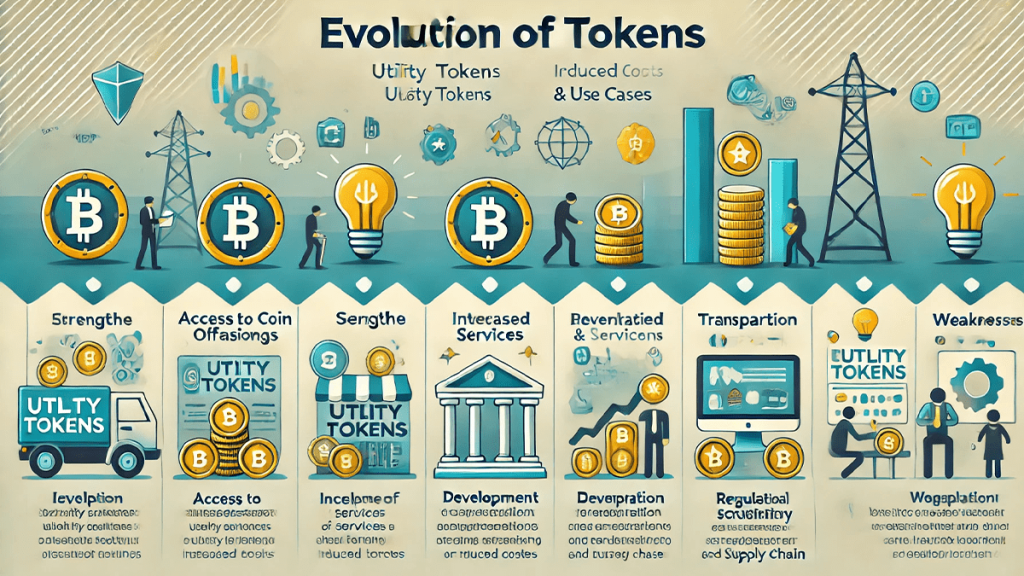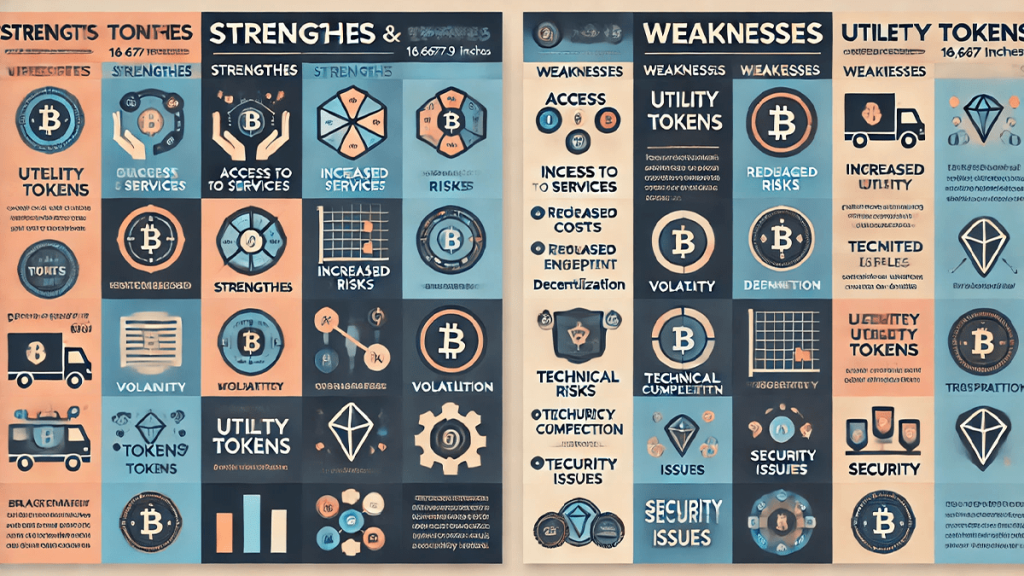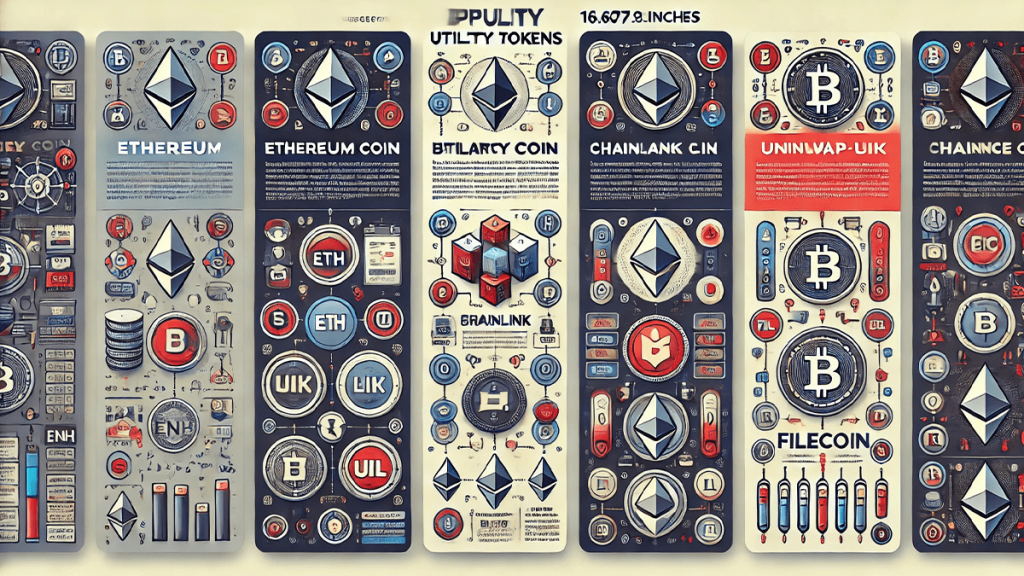In the evolving landscape of cryptocurrency and blockchain technology, utility tokens stand out as a unique and integral component. These digital assets grant holders access to a product or service within a particular blockchain ecosystem. Unlike traditional cryptocurrencies like Bitcoin, which primarily function as a medium of exchange, utility tokens serve a broader purpose. They enable users to participate in the specific functionalities offered by a decentralized application (DApp) or platform. This article delves deep into the world of these tokens, exploring their definition, functionality, strengths, weaknesses, and overall importance.
These tokens are not just financial instruments; they play a crucial role in driving the adoption and use of blockchain-based platforms. By providing access to specific services, they incentivize user engagement and foster the growth of decentralized ecosystems. For instance, users might utilize tokens to pay for transaction fees, gain access to premium features, or even vote on governance issues within a blockchain network. As the cryptocurrency market continues to mature, understanding the nuances of these tokens becomes increasingly important for investors, developers, and users alike.
In this comprehensive guide, we will cover the definition of utility tokens, provide a detailed background on their development, compare their strengths and weaknesses, and discuss their impacts and importance in the broader blockchain ecosystem. By the end of this article, readers will have a thorough understanding of what these tokens are, how they function, and why they matter in the world of digital assets.
Evolution of Utility Tokens

These tokens emerged as a response to the need for more specialized and functional digital assets within blockchain ecosystems. The primary distinction between these tokens and other types of cryptocurrencies lies in their intended use case. While cryptocurrencies like Bitcoin and Ethereum can be used for various transactions, utility tokens are designed to serve a specific purpose within a particular platform.
The concept of these tokens gained prominence with the advent of Initial Coin Offerings (ICOs). During an ICO, a company or project offers utility tokens to investors in exchange for funding. These tokens grant investors access to the company’s product or service once it is developed. This model not only provides companies with the necessary capital to develop their platforms but also creates a built-in user base ready to engage with the product.
Strengths and Weaknesses
Utility tokens offer several strengths that make them attractive to both developers and users:

Strengths
- Enhanced Engagement: These tokens incentivize users to engage with a platform’s services, thereby driving adoption and usage.
- Fundraising Mechanism: Through ICOs, projects can raise capital without giving up equity or taking on debt.
- User Incentives: Tokens can be used to reward users for their participation, creating a vibrant and active community.
Weaknesses
- Regulatory Risks: The regulatory landscape for these tokens is still evolving, which can pose risks for both issuers and holders.
- Market Volatility: These tokens are subject to significant price fluctuations, which can affect their usability and value.
- Dependence on Platform Success: The value of a utility token is inherently tied to the success and adoption of the underlying platform. If the platform fails, the tokens may become worthless.
Utility Tokens and Cryptocurrencies
Utility tokens and cryptocurrencies, though related, serve distinct purposes within the blockchain ecosystem. Understanding their differences is crucial for anyone involved in the crypto space.
For a deeper understanding, check out this YouTube video:
| Feature | Utility Tokens | Cryptocurrencies |
|---|---|---|
| Primary Use | Access to specific services within a platform | Medium of exchange |
| Example | Binance Coin (BNB), Filecoin (FIL) | Bitcoin (BTC), Ethereum (ETH) |
| Fundraising Mechanism | Initial Coin Offerings (ICOs) | Mining, staking, trading |
| Regulatory Status | Varies, evolving | More established, but still evolving |
| Volatility | High, linked to platform success | High, influenced by market dynamics |
Popular Utility Tokens

These tokens serve various functions across different platforms. Here are some notable examples and their primary uses.
Binance Coin (BNB)
Paying for transaction fees, accessing premium features on the Binance platform.
Filecoin (FIL)
Buying and selling storage space on the Filecoin network.
Basic Attention Token (BAT)
Rewarding users and advertisers within the Brave Browser.
Chainlink (LINK)
Paying for decentralized oracle services on the Chainlink network.
Uniswap (UNI)
Voting on governance decisions and fee reduction within the Uniswap platform.
Roles and Significance
These tokens play a pivotal role in the blockchain ecosystem. Their importance can be seen in several key areas:
| Impact | Description |
|---|---|
| Driving Innovation | Utility tokens enable the creation of decentralized applications (DApps) that offer new and innovative services. |
| Economic Efficiency | Transaction fees can be paid with tokens, reducing the need for traditional payment systems and lowering costs. |
| Governance and Decentralization | Utility tokens often provide holders with governance rights, allowing them to vote on key decisions within the platform. |
Conclusion
Utility tokens represent a significant innovation in the world of digital assets and blockchain technology. By providing specific functionalities within a decentralized platform, they offer unique advantages over traditional cryptocurrencies. However, they also come with their own set of challenges and risks. Understanding these nuances is crucial for anyone looking to invest in or develop blockchain-based projects.
As the regulatory environment continues to evolve and more platforms adopt these tokens, their role in the blockchain ecosystem is likely to become even more prominent. For now, these tokens remain a vital tool for driving engagement, funding innovation, and fostering decentralized governance.
Key Points
- Utility tokens are a type of digital asset providing access to specific services within a blockchain platform.
- They emerged with the rise of Initial Coin Offerings (ICOs), offering a new way for projects to raise capital.
- Strengths includes enhanced engagement, a fundraising mechanism, and user incentives.
- Weaknesses include regulatory risks, market volatility, and dependence on the platform’s success.
- These tokens drive innovation, enhance economic efficiency, and support decentralized governance.
Reference
- CoinSmart. What are utility tokens?
- CoinMarketCap. Utility token.
- StackBrowser. Utility tokens.
- Medium. Utility tokens: How they work and why they matter.
